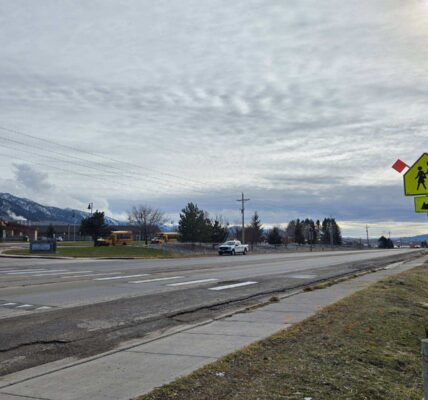
By Jasmine Hall
Wyoming Tribune Eagle
Via- Wyoming News Exchange
CHEYENNE — Health care advocates told legislators Friday that a lack of mental health resources, such as emergency centers, infrastructure, staff and funding has caused crisis care gaps in Wyoming.
These gaps extend to non-emergent mental health services, but there was an emphasis placed on crisis stabilization during the Wyoming Legislature’s Joint Labor, Health and Social Services Committee. A mental health crisis differs from basic mental health care in that if the individual experiencing a psychiatric episode is left untreated, they could need to be placed in a more extensive clinical setting, such as inpatient hospitalization.
There are currently four regional crisis stabilization providers out of five regions, and 27 total available beds in the state, which cost close to $4 million in the 2021-22 biennial budget. Wyoming Department of Health officials said this has led to accommodation, transportation and access issues for residents.
Committee chair Rep. Sue Wilson, R-Cheyenne, also brought attention to historical cases where an individual suffering an acute episode often devolves into a law enforcement issue. Any situation in which a person’s behavior puts them at risk of hurting themselves or others, and/or prevents them from being able to care for themselves or function is a crisis.
“I think we can all agree that a jail is not the setting for people to be treated,” she told committee members. “And we don’t want a person’s situation spilling over into other parts of the community.”
She said what you see on the news is usually a bad outcome.
Discussions surrounding mental health have been at the forefront of state and federal legislative bodies across the nation following shootings in New York, Texas and Oklahoma, and it is not a new topic for the Wyoming Legislature. During the 20-day budget session earlier this year, lawmakers from both sides of the aisle debated additional funding for mental health services in the 2023- 24 biennium budget and from American Rescue Plan appropriations.
The governing body approved an initial $7 million in ARPA dollars for construction specific to crisis stabilization and women’s residential treatment, but requests for appropriations designated to suicide lifeline enhancements were not approved.
According to Mental Health America, Wyoming ranks last in the country in youth mental health services, 48th in access to overall mental health care and 40th in prevalence of mental illness.
Yet suicide rates are much higher than the national average. In a report provided by the Wyoming Department of Health proposing funding solutions to develop psychiatric residential treatment facilities, it was noted that from 2009-19, the annual age-adjusted suicide rate per 100,000 was 29.9, whereas the national average is currently 13.42.
The Kaiser Family Foundation also found that the percentage of need for mental health professionals met in Wyoming is only 47.1%.
Understanding the state’s mental health care environment and its crisis gaps is why Wilson said the Labor Committee came together Friday, although she didn’t have a specific set of solutions in mind yet.
“We just need to get our heads around what we do, what we aren’t doing, what is needed and how do we move forward from this,” she said.
Wyoming Department of Health Director Stefan Johansson and Wyoming Association of Mental Health and Substance Abuse Centers Director Andi Summerville were at the meeting to provide context. Both identified issues and showed lawmakers where improvements were needed.
From the state perspective, Johansson said it was lacking emergency and crisis services for children and adolescents – resources such as crisis infrastructure, staffing, logistics and funding, as well as community stakeholder and resource agreements. He also sees a need for more evidence-based emergency crisis intervention services, such as a 24-hour crisis stabilization call center, mobile crisis services and crisis intervention teams.
“When folks are often de-compensating (losing their ability to maintain normal or appropriate psychological defenses) in the community, and often law enforcement is involved, we have seen and observed success when there’s either somewhere to take that person that’s not jail or a hospital,” he said. “That can be accessed for those that could have a lower level of care, and have one or two days in a crisis facility.”
Those locations are also significant because they can also provide a “step-down” for individuals with a mental illness from a more restrictive setting, such as an inpatient hospitalization and correctional setting.
Summerville made similar points to the Labor Committee, and emphasized these services need to be on a comprehensive statewide network in the least restrictive setting in order to address mental health crisis care. The current options available are the the 998/Suicide Lifeline, Community Mental Health Center Net- work 24/7 on-call and crisis stabilization infrastructure, and hospital emergency room, inpatient and state hospital services.
However, she said there are facility limitations, transportation gaps, difficulty placing step-down patients and 23 different counties with their own processes. The suicide lifeline also isn’t staffed 24/7 by Wyoming responders, and there is inadequate staffing for facilities.
She said she hopes to see the development of a potential Medicaid state plan amendment to attain funding from the federal government, support for the development of two facility additions, behavioral health reform, 24/7 operations and implementations for the lifeline, and a cohesive strategy for both adolescents and adults in crisis.
“What we lack in Wyoming is a unified, ‘this is how we do crisis,’” she said.




